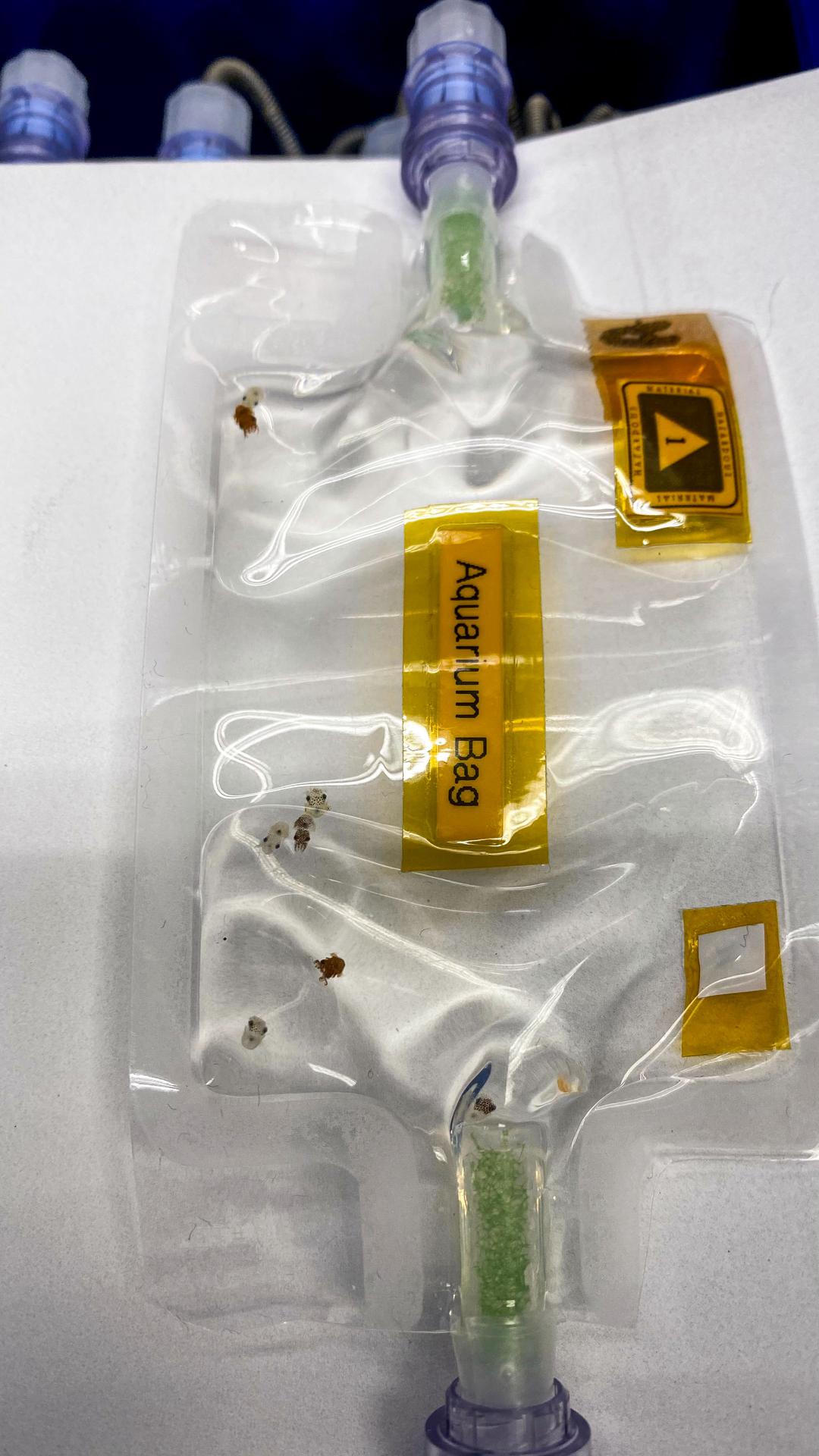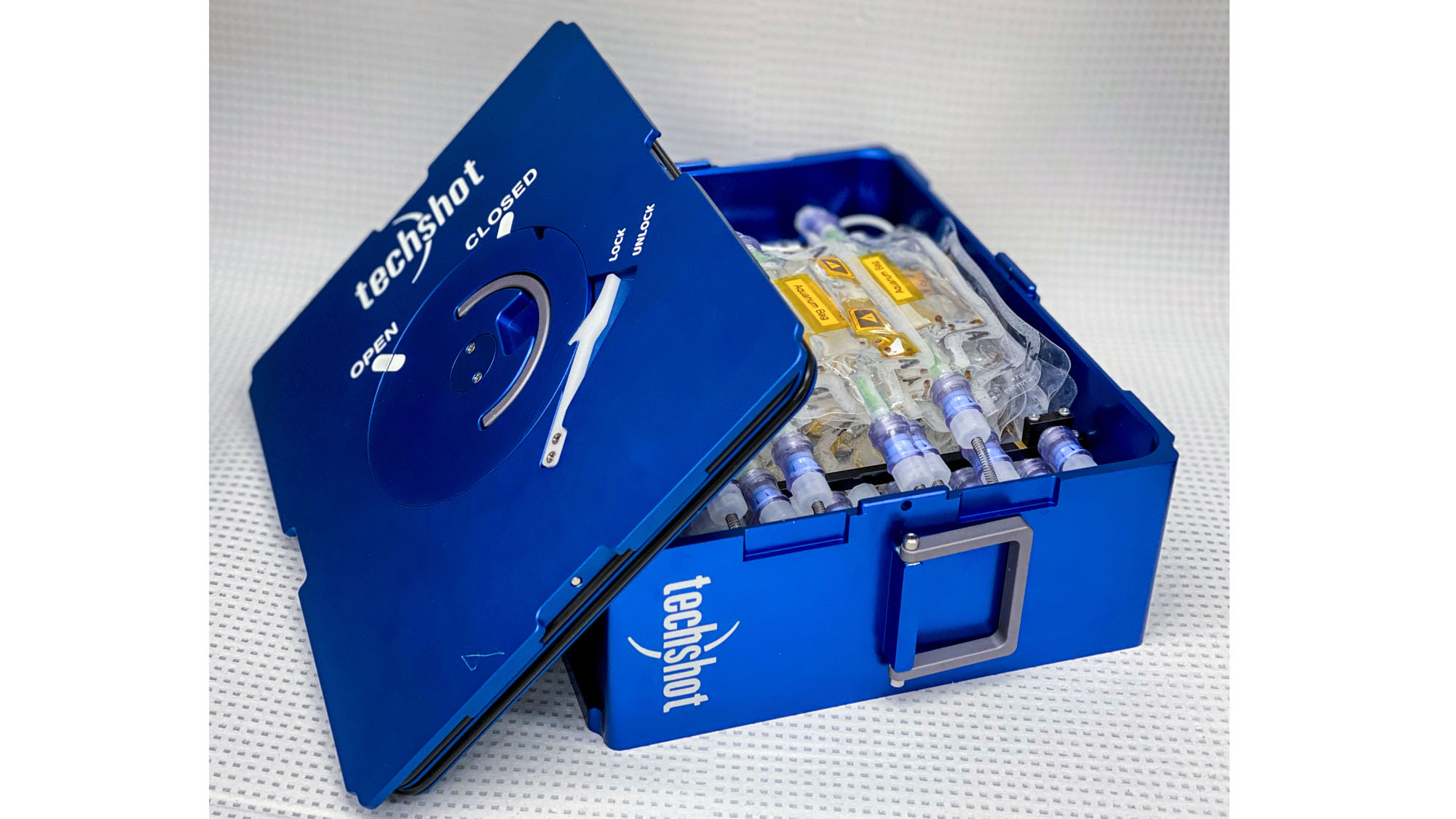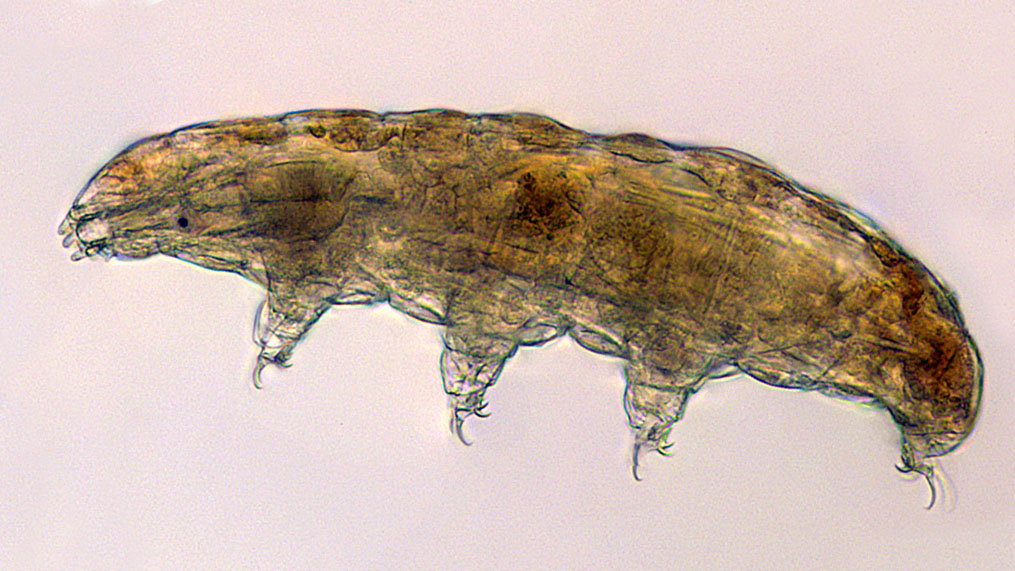SpaceX will launch baby squid and tardigrades to the space station this week
CAPE CANAVERAL, Fla. — SpaceX is gearing up to launch its 22nd cargo mission to the International Space Station (ISS) this week, and tucked inside the Dragon cargo capsule will be some interesting organisms.
Bobtail squid and tardigrades, also known as water bears, will be traveling to the orbital outpost to help researchers answer some key questions about spaceflight.
Their ride: a shiny new Falcon 9 rocket, dubbed B1067. If all goes as planned, SpaceX's CRS-2 mission — the 22nd Dragon cargo launch under its Commercial Resupply Service contract with NASA — will blast off from Pad 39A at NASA's Kennedy Space Center in Florida on Thursday (June 3) at 1:29 p.m. EDT (1729 GMT).
Video: SpaceX shipping tardigrades, squid and more to space station
Related: There are thousands of tardigrades on the moon

Squids in space
Baby bobtail squid (Euprymna scolopes) will be among the various research experiments and cargo scheduled to ship to the ISS. A relative of the cuttlefish, these tiny cephalopods are an interesting organism as they glow in the dark. That's thanks to a specialized organ in their ink sac that lights up at night.

Researchers are hopeful that the squids could help shed some light on how microbes in animals react to spaceflight. To that end, NASA is sending newly hatched squid paralarvae (babies) to space to study how the relationship between the squid and a group of symbiotic microbes behaves in microgravity, as part of a research investigation called UMAMI (short for "Understanding of Microgravity on Animal-Microbe Interactions").
Microbes play a significant role in the normal development of animal tissues and in maintaining human health.
Get the Space.com Newsletter
Breaking space news, the latest updates on rocket launches, skywatching events and more!
"Animals, including humans, rely on our microbes to maintain a healthy digestive and immune system," UMAMI principal investigator Jamie Foster said in a statement. "We do not fully understand how spaceflight alters these beneficial interactions. The UMAMI experiment uses a glow-in-the-dark bobtail squid to address these important issues in animal health."
The experiment is composed of two Fluid Processing Cassettes (FPC) — made by Techshot, an aerospace company out of Indiana that helps facilitate research investigations on the ISS — that will house an experimental group and a control group.

A cohort of squid paralarvae will be inoculated with filtered seawater containing a symbiotic microbe called V. fischeri, then incubated for 12 hours. The other cassette will contain squid along with filtered seawater that has not been treated with the microbes.
Once the experiment has run its course, the paralarvae will be euthanized and the samples stored for return to Earth. Scientists are hopeful that the investigation could lead to new ways to preserve astronaut health on long-duration space missions.
It could also lead to a better understanding of the complex interactions between animals and beneficial microbes, and the discovery of new pathways that microbes use to communicate with animal tissues.
Related: The gut in space: how bacteria change in astronauts' digestive systems
Hardy tardigrades

Tardigrades, aka water bears, can live in the most extreme environments, making them a fascinating organism to study. Researchers have been able to sequence the tardigrade genome (Hypsibius exemplaris) and have gone one step further, by developing methods of determining how environmental conditions affect gene expression in tardigrades.
As part of an investigation called Cell Science-04, scientists hope to identify which genes are involved in the adaptation and survival of tardigrades in high-stress environments, like microgravity.
"Spaceflight can be a really challenging environment for organisms, including humans, who have evolved to the conditions on Earth," principal investigator Thomas Boothby said in a statement "One of the things we are really keen to do is understand how tardigrades are surviving and reproducing in these environments and whether we can learn anything about the tricks that they are using and adapt them to safeguard astronauts."
The experiment will run for two months on station and the tardigrades will ship to the ISS frozen, and be subsequently thawed after the experiment is activated. A reverse genetic approach was developed for this investigation, which will use RNA interference to directly investigate the role a specific gene plays in tolerating the environment.
Identifying the mechanisms used by tardigrades to protect themselves from environmental stresses could help researchers better protect astronauts.
Follow Amy Thompson on Twitter @astrogingersnap. Follow us on Twitter @Spacedotcom or Facebook.
Join our Space Forums to keep talking space on the latest missions, night sky and more! And if you have a news tip, correction or comment, let us know at: community@space.com.

Amy Thompson is a Florida-based space and science journalist, who joined Space.com as a contributing writer in 2015. She's passionate about all things space and is a huge science and science-fiction geek. Star Wars is her favorite fandom, with that sassy little droid, R2D2 being her favorite. She studied science at the University of Florida, earning a degree in microbiology. Her work has also been published in Newsweek, VICE, Smithsonian, and many more. Now she chases rockets, writing about launches, commercial space, space station science, and everything in between.
